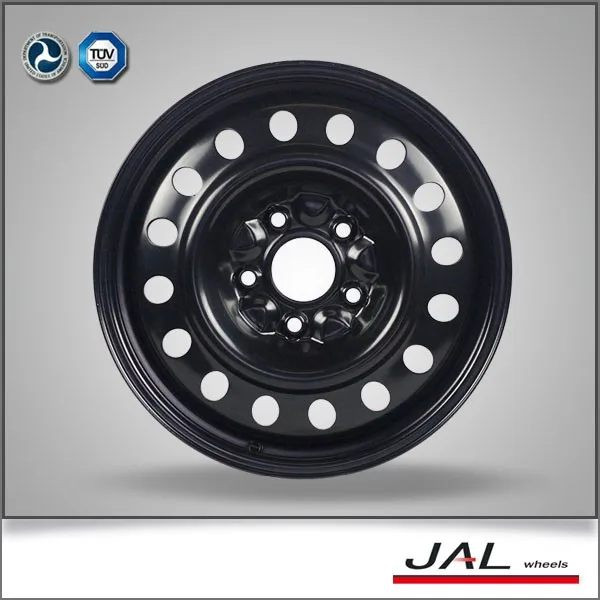17 Inch Black Steel Rims 17 Inch Black Steel Wheels
17 Inch Steel Wheels - One of the wheels is mostly a circular ingredient that is supposed to rotate with an axle bearing. The wheel is one of the main different parts of the wheel and axle which is amongst the six simple machines. Wheels, side by side with axles, allow heavy objects to get moved easily facilitating movement or transportation while supporting lots, or performing labor in machines. Wheels are usually for other purposes, say for example ship's wheel, wheel, potter's wheel and flywheel.Common examples are found in transport applications. One of the wheels greatly reduces friction by facilitating motion by rolling together fx axles. For wheels to rotate, a point in time really should be relevant to the wheel about its axis, either using gravity or by the use of another external force or torque.The English word wheel emanates from the Old English word hweol, hweogol, from Proto-Germanic *hwehwlan, *hwegwlan, from Proto-Indo-European *kwekwlo-, a long-term style of the source *kwel- "to revolve, move ".Cognates within Indo-European include Icelandic hjól "wheel, tyre", Greek κύκλος kúklos, and Sanskrit chakra, these both meaning "circle" or "wheel ".Precursors of wheels, named "tournettes" or "slow wheels", were known inside the Middle East with the 5th millennium BCE (one of the initial examples was discovered at Tepe Pardis, Iran, and dated to 5200–4700 BCE). We were looking at fabricated from stone or clay and secured down which includes a peg during the center, but required effort to turn. True (freely-spinning) potter's wheels were apparently available in Mesopotamia by 3500 BCE and maybe since 4000 BCE, and therefore the oldest surviving example, sega's associated with Ur (modern day Iraq), dates to approximately 3100 BCE.The original proof of wheeled vehicles appears with the lover from the 4th millennium BCE, near-simultaneously in Mesopotamia (Sumerian civilization), the Northern Caucasus (Maykop culture) and Central Europe (Cucuteni-Trypillian culture), so your question of which culture originally invented the wheeled vehicle remains to be unsolved.The first well-dated depiction of a wheeled vehicle (here a wagon — four wheels, two axles) is along the Bronocice pot, a c. 3500 – 3350 BCE clay pot excavated inside of a Funnelbeaker culture settlement in southern Poland.The oldest securely dated real wheel-axle combination, that from Stare Gmajne near Ljubljana in Slovenia (Ljubljana Marshes Wooden Wheel) happens to be dated in 2σ-limits to 3340–3030 BCE, the axle to 3360–3045 BCE.2 kinds of early Neolithic European wheel and axle are known; a circumalpine particular wagon construction (the wheel and axle rotate together, such as Ljubljana Marshes Wheel), and this within the Baden culture in Hungary (axle will not rotate). They are both dated to c. 3200–3000 BCE.In China, the wheel was certainly present in the adoption for the chariot in c. 1200 BCE,although Barbieri-Low[9] argues for earlier Chinese wheeled vehicles, c. 2000 BC.
Related Images with 17 Inch Black Steel Rims 17 Inch Black Steel Wheels
17 Inch Black Steel Rims 17 Inch Steel Wheels
17 Inch Steel Wheel Rim 2016 Buy Black Rims,Rims 5x120 17,17 Inch

Ford Steel Rim 17 eBay
TOYOTA PRADO MY08 17 INCH GENUINE STEEL RIMS for sale in Carramar NSW
-Boxed640x480.jpg)
| TITLE: | 17 Inch Black Steel Rims 17 Inch Black Steel Wheels |
| IMAGE URL: | http://www.4wdbits.co.nz/ProductImages/FullImage/SteelRimBlk17.gif |
| THUMBNAIL: | https://tse3.mm.bing.net/th?id=OIP.f7to2whqE0blfVVJoMW01gEsES&pid=Api&w=198&h=181 |
| IMAGE SIZE: | 221735 B Bs |
| IMAGE WIDTH: | 699 |
| IMAGE HEIGHT: | 640 |
| DOCUMENT ID: | OIP.f7to2whqE0blfVVJoMW01gEsES |
| MEDIA ID: | D7D7DB167B8E747FA200E58E3EE51B3392207334 |
| SOURCE DOMAIN: | hdimagegallery.net |
| SOURCE URL: | http://hdimagegallery.net/17+inch+black+steel+rims |
| THUMBNAIL WIDTH: | 198 |
| THUMBNAIL HEIGHT: | 181 |
Related Images with 17 Inch Black Steel Rims 17 Inch Black Steel Wheels
17 Inch Black Steel Rims 17 Inch Steel Wheels
17 Inch Steel Wheel Rim 2016 Buy Black Rims,Rims 5x120 17,17 Inch

Ford Steel Rim 17 eBay
TOYOTA PRADO MY08 17 INCH GENUINE STEEL RIMS for sale in Carramar NSW
-Boxed640x480.jpg)